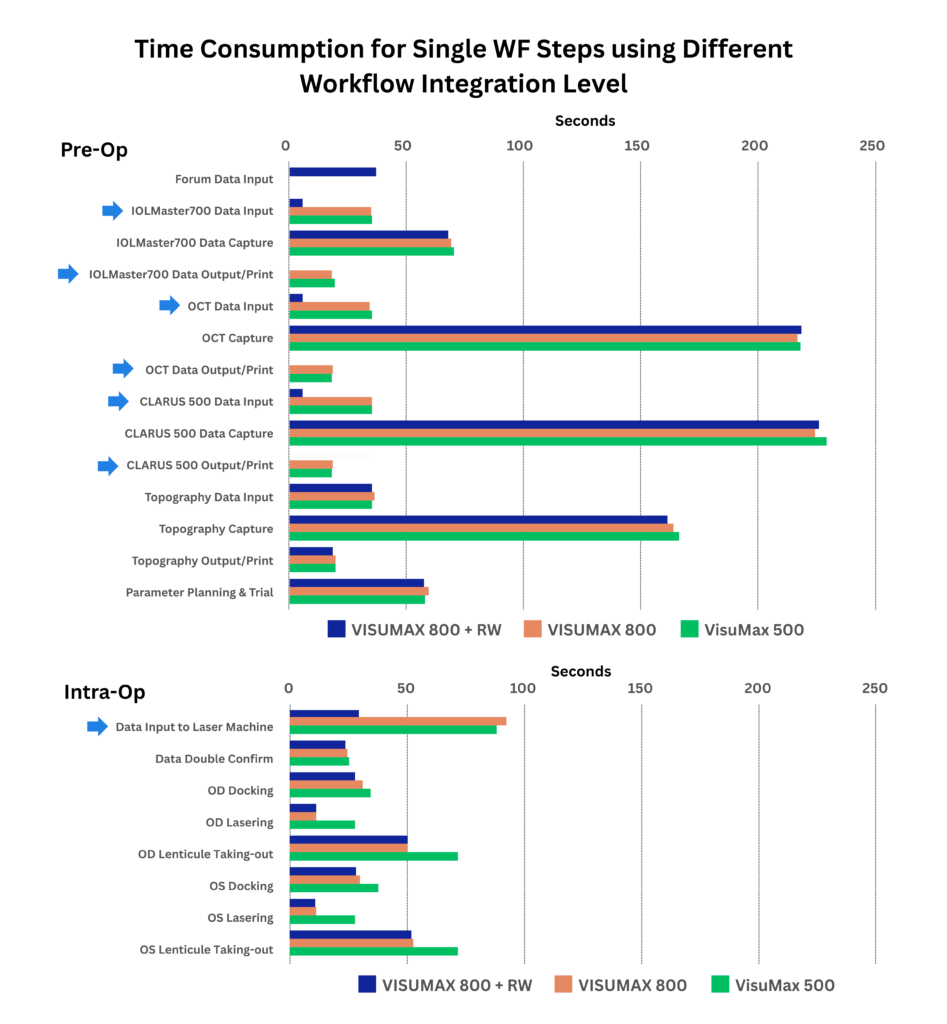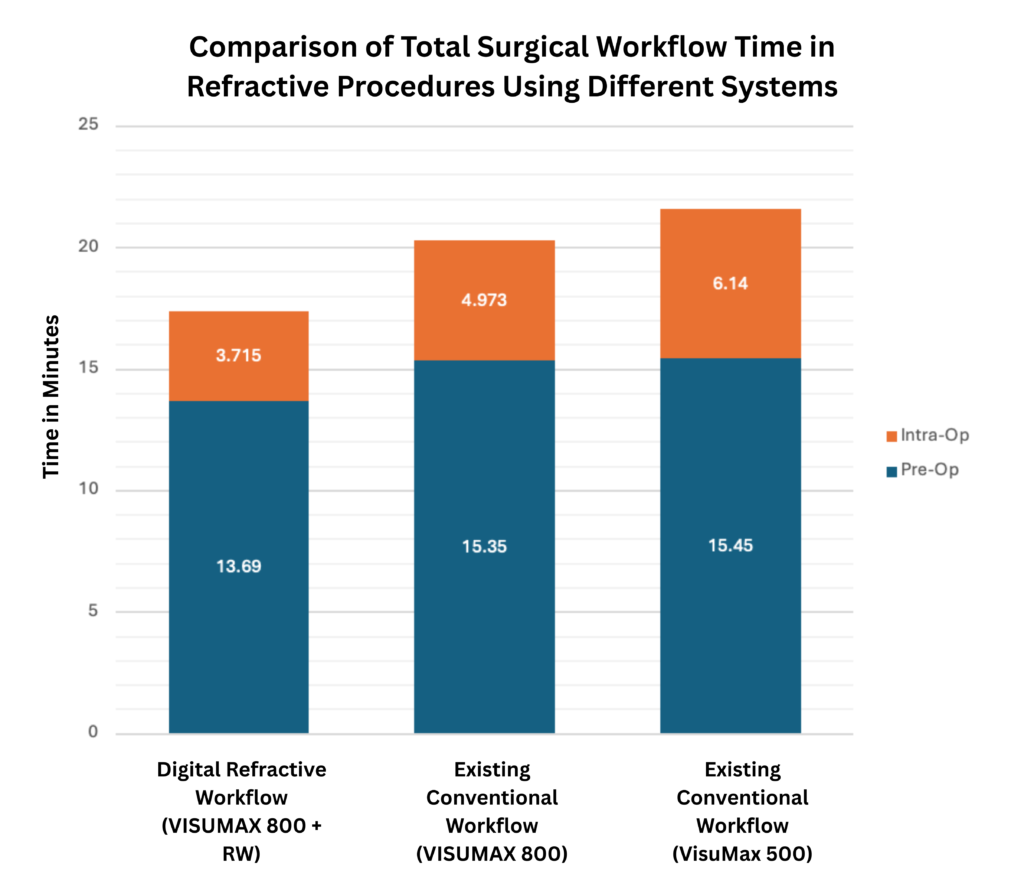Digital workflows are transforming refractive surgery by optimizing clinical performance
Refractive surgery continually evolves, pushing boundaries in precision and patient outcomes—all thanks to digital workflow integration. This shift not only drastically reduces errors and boosts efficiency but also enhances staff coordination and standardizes clinical protocols for superior results.
The field of refractive surgery continues to be at the forefront of innovation in ophthalmology, driven by improvements in precision, efficiency and patient outcomes. Among these developments, digital workflow integration has significantly transformed surgical planning and surgical procedures.
The digital shift
Traditionally, refractive surgery depends on manual data entry, paper-based documentation and disjointed diagnostic and treatment planning systems. The adoption of digital workflow optimizes these processes by integrating diagnostic assessment, surgical planning and treatment delivery, as well as optimizing clinical outcomes into one cohesive system. This not only reduces data entry and transcription errors but also helps improve efficiency, enhance staff coordination and convenience, and standardize clinical protocols.
Digital workflow is already established in cataract procedures.1,2 Digital workflow solutions have streamlined preoperative planning, intraoperative execution and postoperative assessment, enhancing process efficiency, surgical accuracy and patient safety. These advancements have been widely implemented, leading to excellent visual outcomes and high patient satisfaction.2-4
On the other hand, digital workflow integration in refractive surgery remains relatively underexplored. This article examines the role of digital workflow in keratorefractive lenticule extraction (KLEx) surgery, in particular with small-incision lenticule extraction (SMILE), emphasizing its benefits, challenges and clinical implications.
READ MORE: Emerging Waves in Digital Eye Health: From AI Models to Smartphone Clinics
Enhancing patient experience
In our clinic, patients considering KLEx undergo a thorough evaluation including manifest refraction, corneal topography and posterior segment assessments using optical coherence tomography (OCT) and fundus photography.
Integrating and documenting these examinations within a digital platform, such as ZEISS FORUM (Carl Zeiss Meditec; Jena, Germany), allows seamless management of patient data in a single system.5 The digital consolidation ensures that patient information remains updated, accessible, and, importantly, visible to both the clinic staff, the surgeon, as well as the patient during consultation.
Moreover, patient engagement is a crucial aspect of refractive surgery, influencing both satisfaction and clinical outcomes. Digital workflows, particularly platforms like ZEISS Refractive Workplace, incorporate powerful visualization tools that display diagnostic images and treatment parameters in a clear, user-friendly format. These visual aids serve as effective educational tools, helping patients better understand their eye condition and the planned surgical procedure.
This improved understanding can increase confidence and reduce preoperative anxiety. Informed patients tend to be more comfortable and cooperative throughout treatment, enhancing their overall experience.
Furthermore, digital workflow allows for a structured and standardized consultation process. Patients can have their test results explained with the aid of visual tools and even access preoperative educational materials tailored to their specific case. This structured approach reduces miscommunication and ensures patients feel well-informed and reassured throughout their journey.
READ MORE: Has the Digital OR’s Time Finally Come?
Smart surgeons, smarter systems
Laser vision correction involves multiple procedural steps, each susceptible to human error. Potential errors can arise during data transcription, centration, cyclotorsion alignment and parameter settings. A digital refractive workflow significantly reduces these risks by eliminating manual transcription errors and ensuring secure data transfer from diagnostics to treatment planning.
Key digital features, such as automated ocular alignment (OcuLign) and computer-assisted centration (CentraLign), enhance accuracy in cylinder correction and centration, reducing variability in treatment execution. Remote planning capabilities enable surgical planning outside the operating room, allowing for meticulous case preparation and reducing intraoperative stress for both the surgeon and supporting staff.
Streamlining workflow and convenience
A well-structured digital refractive workflow provides a streamlined approach from initial consultation to postoperative assessment, enhancing workflow process efficiency and increasing convenience for clinical staff at every stage. It facilitates seamless patient interactions and customized treatment planning outside the operating room, allowing for greater flexibility and precision. Additionally, standardized data collection facilitates postoperative analysis and the development of personalized nomograms.
By integrating these functions into a single digital ecosystem, clinics can reduce redundancy, optimize scheduling and improve coordination among team members. The ability to plan procedures remotely not only allows clinical staff and surgeons to dedicate more time to patient consultations and complex case assessments, but it also provides greater flexibility in working hours—supporting a better work-life balance for the entire clinical team.
Enhancing efficiency and time savings re- and intraoperatively to serve more patients
To evaluate how the integration of a digital workflow affects our clinic, we compared three separate groups undergoing KLEx:6
- VISUMAX 800 coupled with the Refractive Workplace: 20 patients treated using the ZEISS Corneal Refractive Workflow, which includes VISUMAX 800 and the Refractive Workplace
- VISUMAX 800: 20 patients treated using the VISUMAX 800 with conventional workflow (laser standalone, not connected to digital solutions like Refractive Workplace)
- VisuMax (500 kHz): 20 patients treated using the VisuMax (500 kHz) with conventional workflow
READ MORE: ZEISS VISUMAX 800 with SMILE Pro Software Approved in China

The digital workflow led to an average of 11% reduction in preoperative preparation time by eliminating redundant data entry; with a 10.82% reduction when comparing the VISUMAX 800 + Refractive Workplace group to the VISUMAX 800 group and an 11.37% reduction when comparing the VISUMAX 800 + Refractive Workplace group to the VisuMax (500 kHz) group (Figure 1).

Intraoperatively, the ZEISS Corneal Refractive Workflow with VISUMAX 800 + Refractive Workplace saved approximately 25.3% of the time (75.5 seconds) compared to the conventional VISUMAX 800 workflow, and 39.5% (145.5 seconds) compared to the conventional VisuMax (500 kHz) (Figure 2). Additionally, using the VISUMAX 800 + Refractive Workplace group also showed a significantly reduced overall surgical time of just 3.7 minutes per patient compared to 6 minutes per patient for the VisuMax (500 kHz) group.
This increase in efficiency allowed us to increase the number of procedures performed per hour from four patients to eight, without compromising surgical quality or patient satisfaction.
READ MORE: ZEISS MEL 90 Excimer Laser Gets FDA Nod For Myopia, Hyperopia and Mixed Astigmatism
From promise to practice
The integration of a digital workflow in refractive surgery represents a paradigm shift, offering notable improvements in precision, efficiency and patient experience. While its use in cataract surgery is already proven, its application in refractive surgery is still evolving.
Current clinical experience suggests that a digital refractive workflow can enhance standardization, increase efficiency, reduce human errors, increase convenience and improve both surgical outcomes and patient satisfaction.
As digital integration in ophthalmology continues to advance, further research and long-term studies will help refine these workflows and maximize their clinical benefits to providers and patients.
References
- Rombold F, Niederdellmann C, Pariti R, Khayat B. Time Savings Using a Digital Workflow versus a Conventional for Intraocular Lens Implantation in a Corporate Chain Hospital Setting. Clin Ophthalmol. 2024:18:113-119.
- Brunner BS, Luft N, Priglinger SG, Shajari M, Mayer WJ, Kassumeh S. Saving of Time Using a Software-Based versus a Manual Workflow for Toric Intraocular Lens Calculation and Implantation. J Clin Med. 2022;11(10):2907.
- Shetty N, Saxena A, Singh VM, Fernandes M, Garg P, Venkiteshwar M. Effect of digital cataract workflow on time and resource efficiencies in cataract surgery: time and motion study. J Cataract Refract Surg. 2024;50(12):1208-1214.
- Russell MK, Hsing YI. Evaluation of the Efficiency of a Digital Workflow for Cataract Planning in Patients with Astigmatism. Clin Ophthalmol. 2024;18:1441-1446.
- ZEISS Refractive Workplace: Optimize your workflow with integrated remote planning. Available at: https://www.zeiss.com/meditec/en/products/data-management-software/zeiss-refractive-workplace.html. Accessed on February 4, 2025.
- Lin PJ. Achieve Excellent Patient Outcomes with Refractive Workplace and VISULYZE. In: ZEISS APAC Ophthalmology Symposium; 2024.
Editor’s Note: This content is intended exclusively for healthcare professionals. It is not intended for the general public. Products or therapies discussed may not be registered or approved in all jurisdictions, including Singapore.





